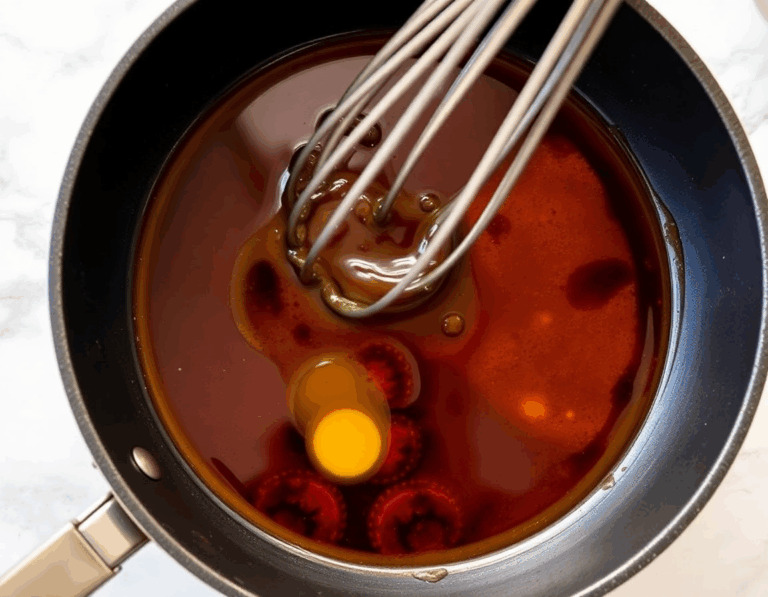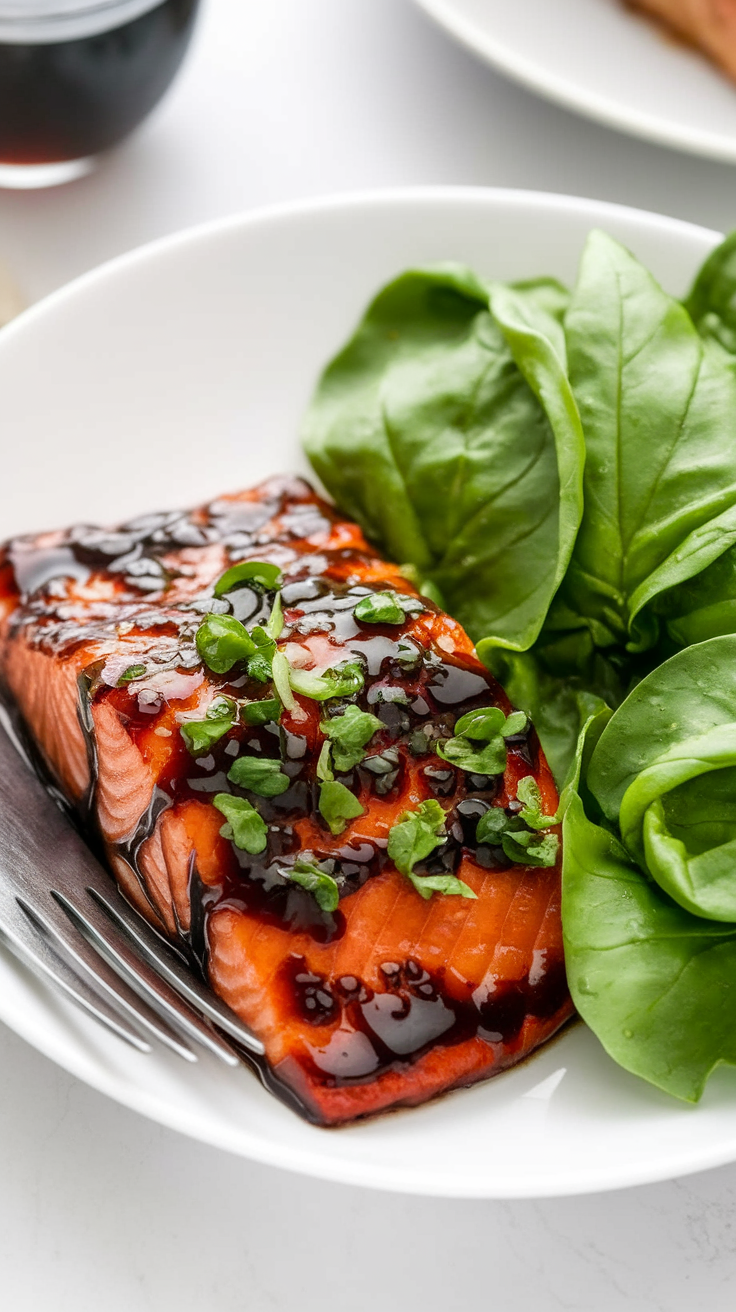I remember the first time I tried balsamic glazed salmon—it was like a firework display for my taste buds. But who has the time for elaborate recipes these days, right? That’s why this quick 25-minute version is a lifesaver.
(It’s like having a gourmet meal without the fuss. ) Imagine the tender, flaky fish enveloped in a sweet-tangy glaze, and before you know it, dinner’s ready.
Steps
- Preheat your oven to 400 degrees F and prepare a baking sheet by lining it with aluminum foil and applying non-stick spray.
- In a small skillet, heat olive oil over medium heat. Add minced garlic and cook for about 2 minutes, ensuring it doesn’t burn, until fragrant and lightly browned.
- Stir in balsamic vinegar, honey, Dijon mustard, salt, and pepper into the skillet. Whisk together and simmer the mixture for roughly 4 minutes until it thickens into a glaze.
- Place the salmon fillets skin-side down on the prepared baking sheet. Brush them generously with the balsamic glaze.
- Bake the salmon for 5 minutes, then remove it from the oven to baste with more glaze. Return it to the oven for an additional 5 to 10 minutes, cooking until the salmon easily flakes with a fork.
- Garnish the baked salmon with freshly chopped parsley and serve immediately. Enjoy your meal!

Ingredients
- Salmon fillets
- 1/4 cup balsamic vinegar
- 2 tablespoons honey (or dark/light brown sugar or pure maple syrup as alternatives)
- 2 teaspoons Dijon mustard
- 2 cloves garlic, minced
- 1 tablespoon olive oil
- Salt, to taste
- Black pepper, to taste
- Fresh parsley, chopped (for garnish)
Nutritional Values
Calories: 650kcal | Carbohydrates: 22g | Protein: 68g | Fat: 30g | Saturated Fat: 4g | Polyunsaturated Fat: 10g | Monounsaturated Fat: 14g | Cholesterol: 188mg | Potassium: 1756mg | Fiber: 2g | Sugar: 18g | Vitamin A: 146IU | Vitamin C: 2mg | Calcium: 66mg | Iron: 4mg
FAQ
- What should I do if my balsamic glaze becomes too thick?
- If your balsamic glaze over-reduces and becomes too thick or sticky, unfortunately, there isn’t a way to fix it. You’ll need to start over. Ensure you remove the glaze from the heat as soon as it thickens to prevent this from happening.
- Can I use white balsamic vinegar instead of regular balsamic vinegar for this recipe?
- Yes, you can substitute white balsamic vinegar in this recipe. It will result in a glaze that is milder and sweeter in flavor compared to using regular balsamic vinegar.
- How should I store leftover balsamic glazed salmon?
- Leftover balsamic glazed salmon can be stored in the refrigerator for up to 3 days. If you wish to freeze it, it can be kept in the freezer for up to 3 months. Make sure to defrost it in the fridge overnight before reheating.
- What is the best way to reheat balsamic glazed salmon?
- For the best results, reheat the salmon in a 350-degree Fahrenheit oven until it is warmed through. This helps maintain the texture and flavor of the salmon.
- What can I serve with balsamic glazed salmon?
- Balsamic glazed salmon pairs well with a variety of side dishes. You can serve it with a fresh salad, such as spinach and strawberry salad, or alongside some roasted vegetables for a complete meal.
Tips
- Avoid Burning the Garlic: When preparing the glaze, ensure you cook the garlic on medium to medium-low heat to prevent it from burning, which can make the glaze taste bitter.
- Monitor the Glaze Consistency: Keep a close eye on the balsamic glaze as it reduces. If cooked too long or on high heat, it can become overly thick and sticky. Remove it from the heat as soon as it thickens to avoid starting over.
- Reapply Glaze During Baking: For a more flavorful salmon, baste the fillets with the glaze again about five minutes into the baking process.
- Check Internal Temperature: To ensure the salmon is perfectly cooked, use an instant-read thermometer. The salmon should reach an internal temperature of 140°F, and it will continue to rise as it rests.
Equipment
- Non-stick Skillet – A quality non-stick skillet for preparing the balsamic glaze.
- Sheet Pan – An everyday essential for baking the salmon.
- Fillet Knife – Useful for removing the skin from the salmon if desired.
- Instant Read Thermometer – To ensure the salmon reaches the correct internal temperature.
